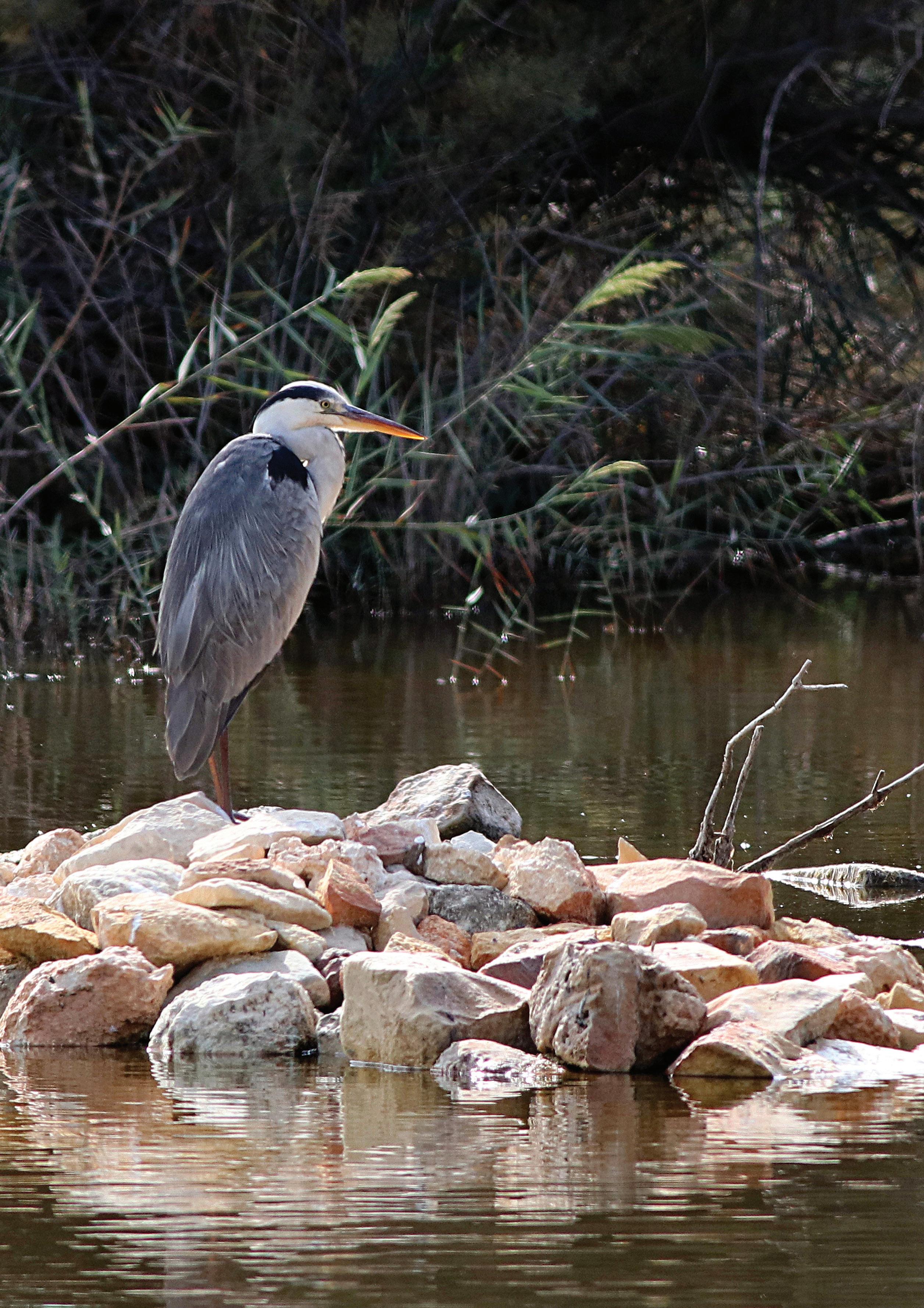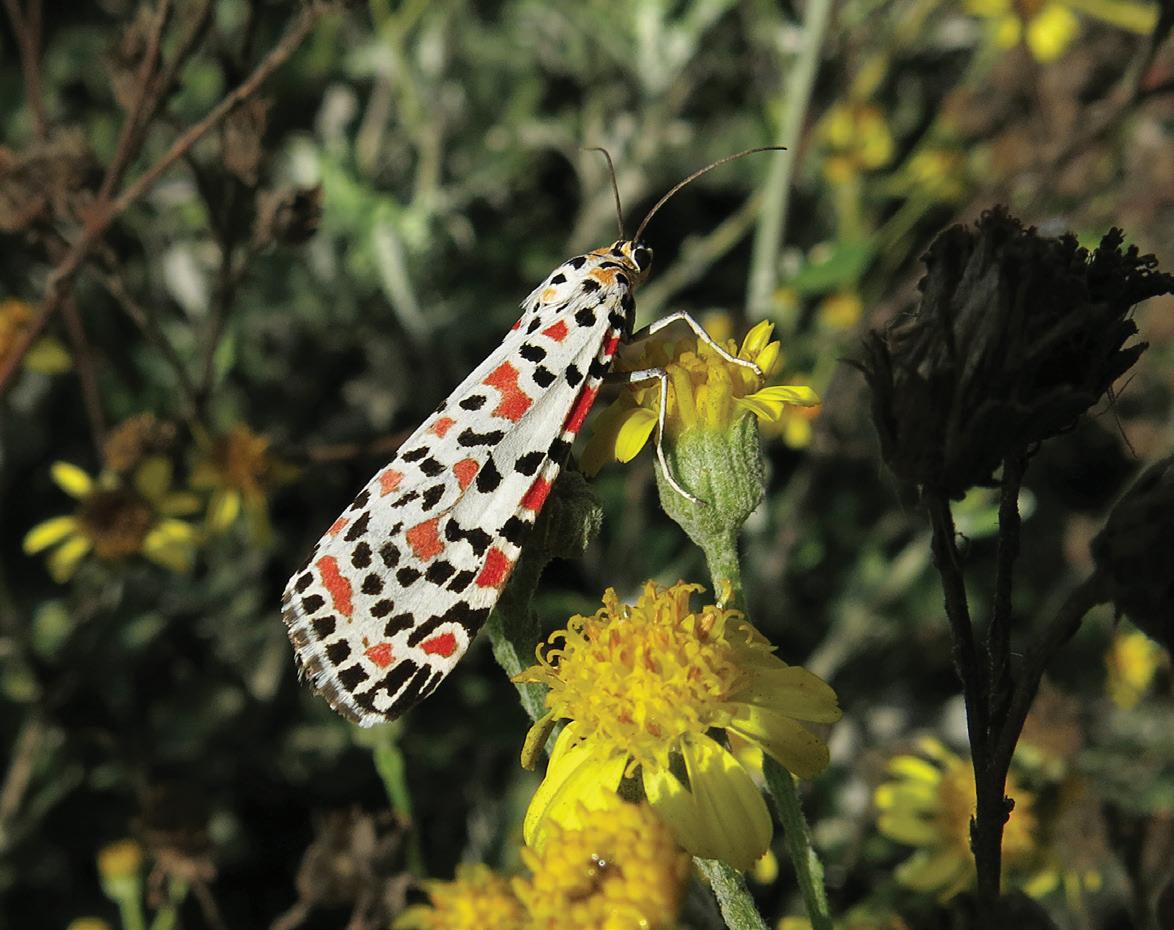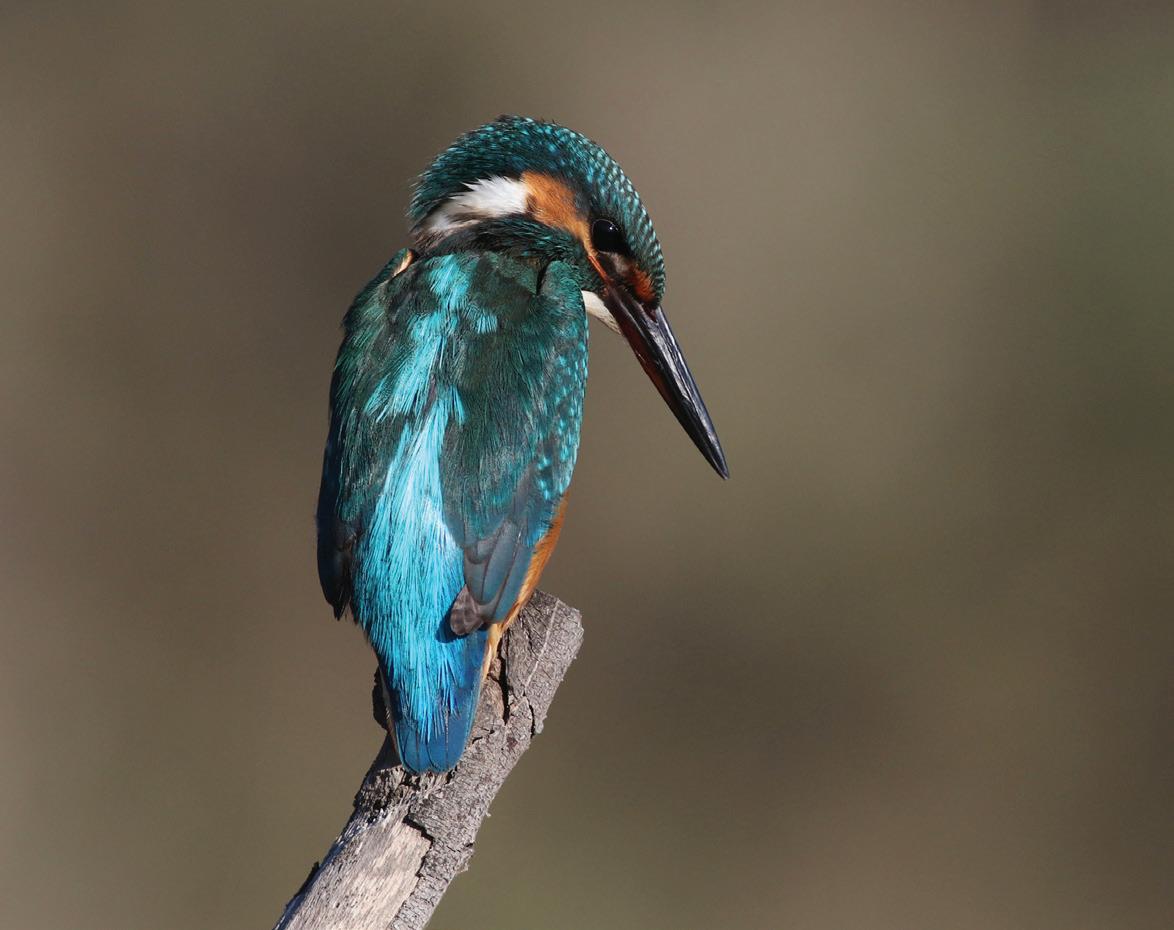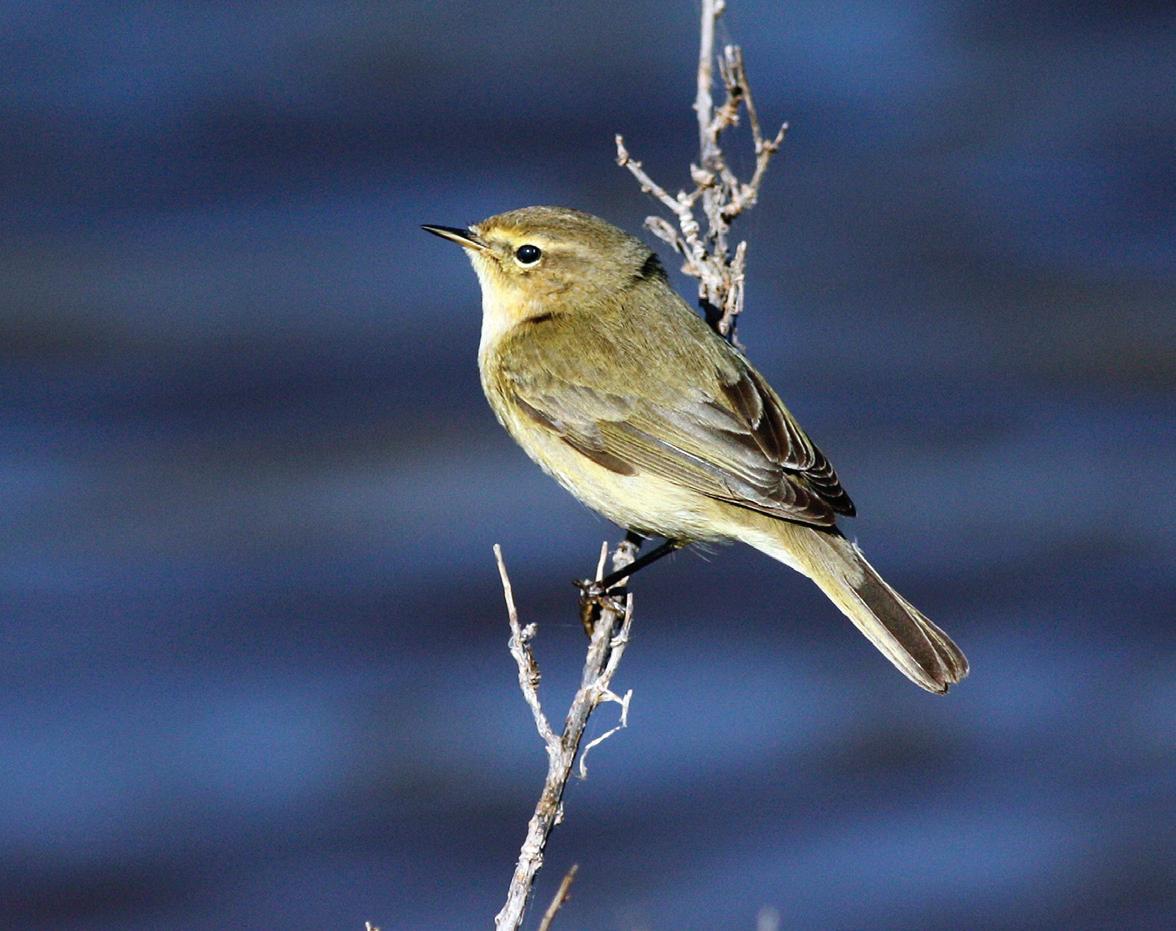
2 minute read
Nature at our reserves: Għadira
Nature at our reserves
Opening hours September to May Monday, Wednesday & Friday 2pm-7pm Saturday & Sunday 10am-4pm Entrance free (donations welcome!)
Advertisement
More info at http://bit.ly/GħadiraNatureReserve An adult Grey Heron resting at Għadira Nature Reserve

Crimson-speckled Flunkey

Common Kingfisher

Common Chiffchaff Most moths are drab coloured, generally browns, greys and blacks. Well it makes sense: as most moths fly at night, what’s the point of being colourful? Better to have earthy hues to camouflage them while they sleep by day. But there are exceptions, because some moths fly by day. One such is the exquisite Crimson-speckled Flunkey, a small white beauty so artistically flecked in red and black you’d think we photoshopped the picture! We didn’t, this jewel really does exist, and it could be out there now looking for autumn flowers. One of the foodplants of its caterpillar is Borage (Fidloqqom), a plant most consider a useless weed. But of course in BirdLife vocabulary the word ‘weed' does not exist.
Common Kingfisher
Għasfur ta’ San Martin Alcedo atthis
Few people know that we get Kingfishers in Malta. It’s true we don’t have the bubbling streams these birds seek, but kingfishers are migratory, so they must pass through places that don’t always provide ideal habitat. So a few Kingfishers do turn up here for a rest and perhaps a snack before flying on. Naturally they won’t turn up in your garden (unless you have a lake there!) but a wetland like Għadira draws them like magnets. Having nested early in mainland Europe, Kingfishers start flying south even in high summer, and begin to appear at the nature reserves and around our shores. If they find good conditions (no disturbance and plenty of small fish) some even stay the winter, as happens every year at Għadira and our other nature reserves.
Common Chiffchaff
Vjolin tax-Xitwa Phylloscopus collybita
The Common Chiffchaff is a tiny bird, even a sparrow is massive compared to it. The Chiffchaff is roughly the shape and colour of a leaf, indeed Chiffchaffs and related species are known collectively as leaf warblers. Chiffchaffs are always flitting restlessly among foliage, on compost heaps and pond edges along valley beds, in their constant search for minuscule insect morsels. We see Chiffchaffs in autumn and winter, hence the reference to winter in their Maltese name. The ‘vjolin’ refers to their repetitive siff-saff, siff-saff, siff-saff song, perhaps reminiscent of someone sawing away at a violin. At Għadira the Chiffchaff’s song is one sound you’re almost guaranteed to hear in winter, especially if the sun is shining.










